GM made more than 3,800 F7s, which was more than twice the number of F3s and in fact more than all other Fs combined. Yet Greg Palumbo has images of just eight data cards for F7s, plus a couple more for FP7s, the passenger variant of F7. It may be that in the early 1950s General Motors stopped making data cards for each series of locomotive it produced.
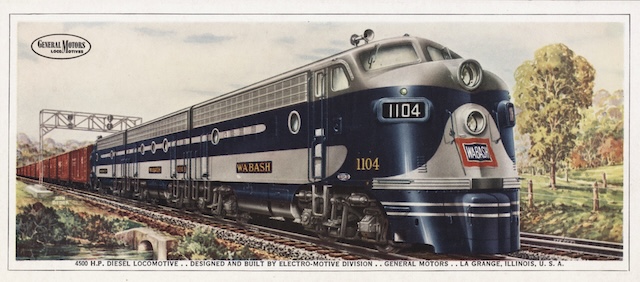
This card is signed by Ben Dedek.
Wabash received its first batch of F7s, including the three-unit set shown on this data card, in August 1949. It ended up buying a total of 127 of them.
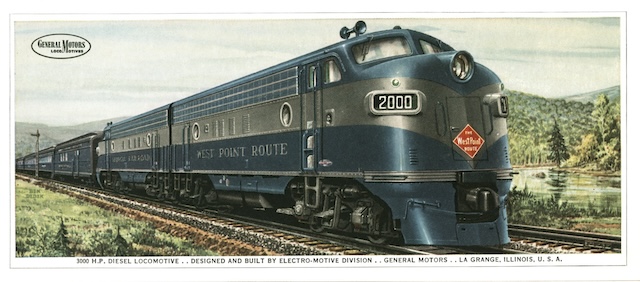
This card is signed by Ben Dedek.
Atlanta & West Point received two FP7 A units in August 1949 and two more in February 1951. These were numbered 551 through 554, so it is a puzzle why the data card uses the number 2000. The FP7 was four feet longer than an F7 to accommodate a boiler for heating passenger cars.
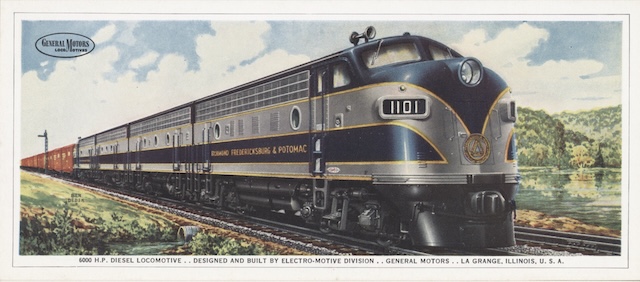
This card is signed by Ben Dedek.
Richmond, Fredericksburg & Potomac received four four-unit F7s in November 1949 and one more in February 1950. Number 1101 was part of the first of these to be delivered.
Although the locomotive in this picture is pulling a freight train, number 4028 was an FP7, meaning it contained a boiler for heating passenger cars and was geared for higher speeds. This card doesn’t have a back and I don’t recognize the artwork as clearly being by Dedek or Bockewitz. This was the first Diesel ordered from GM’s London, Ontario plant, so it is likely the painting was done by a Canadian artist.
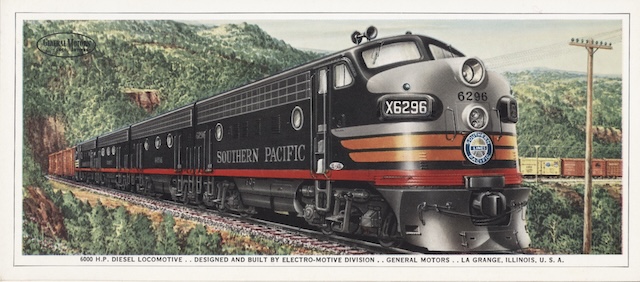
I don’t see a signature on this card but it is probably by Ben Dedek.
Southern Pacific bought close to 480 F7s starting with number 6140 in June 1949. The locomotive on this card was from the sixth batch of F7s produced for SP and was delivered in October 1950. Though this is called the “black widow” paint scheme, it is really paying homage to Southern Pacific’s Daylight steam locomotives, which were black with graphite (silver) smokebox doors and red and orange stripes.
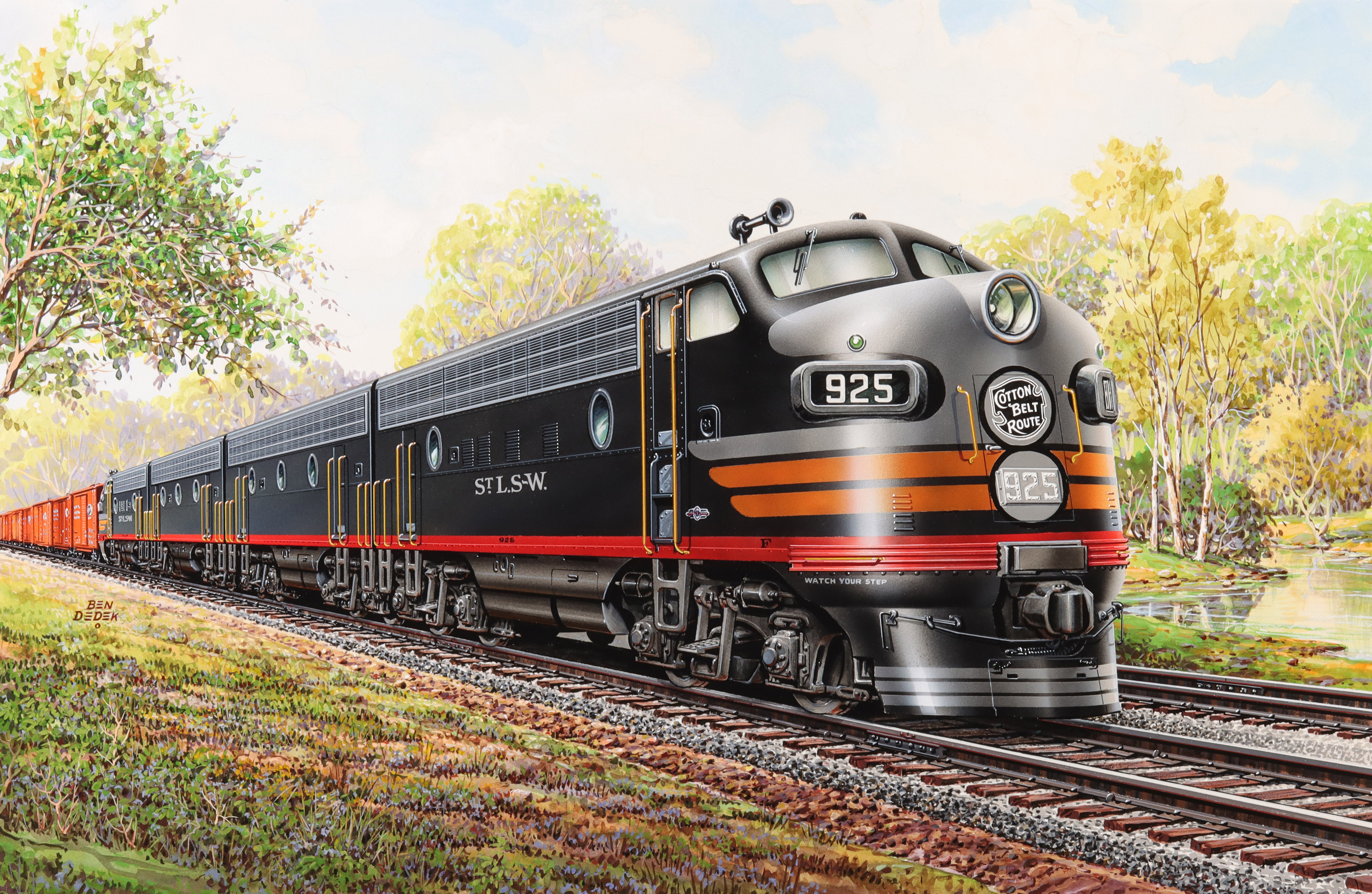
This card is signed Ben Dedek. Click image for a larger view. Source: Soulis.
Here is an original painting by Ben Dedek of an F7 owned by Southern Pacific subsidiary Cotton Belt in the same paint scheme shown on the Southern Pacific card. The Cotton Belt received about a dozen F7s in February 1950 and bought another 33 or so after that.


I think the “Black Widow” nickname comes from the red stripe below the mostly black car body, which reminded some of the unpleasant spider. The scheme was briefly considered as an alternate to the Daylight scheme when SP management decided in 1958 that maintaining two locomotive schemes (as well as the various passenger equipment colors) was no longer economically feasible. The problem with the Widow was that it eliminated no colors, and actually added silver to the mix. So what we ended with was the “Bloody Nose” and simulated stainless steel with red letter board.
You’d think that when SP started streamlining its trains that someone would have pointed out that settling on one standard paint scheme for all passenger rolling stock would have (a) reduced maintenance costs, and (b) allowed for any car to be deployed anywhere in the system as needed without color mismatch. Oh well, coulda, shoulda, woulda.